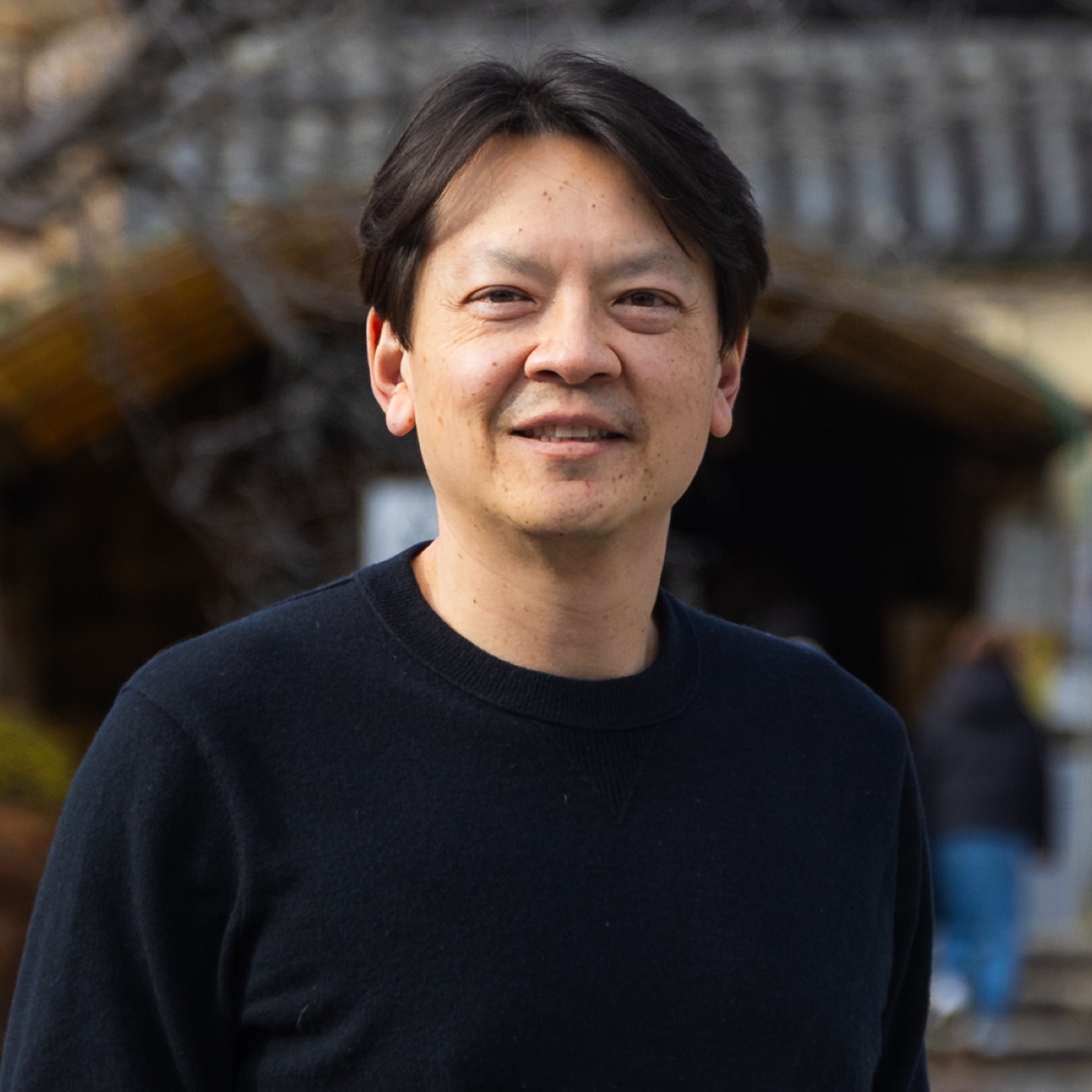Hidden in the mountains of Imari is Okawachiyama Village, where the Nabeshima clan kilns produced high-end porcelain during the Edo period. Stroll through the cobblestone streets, enjoy the beautiful mountain scenery, and browse the quaint porcelain and ceramic shops.
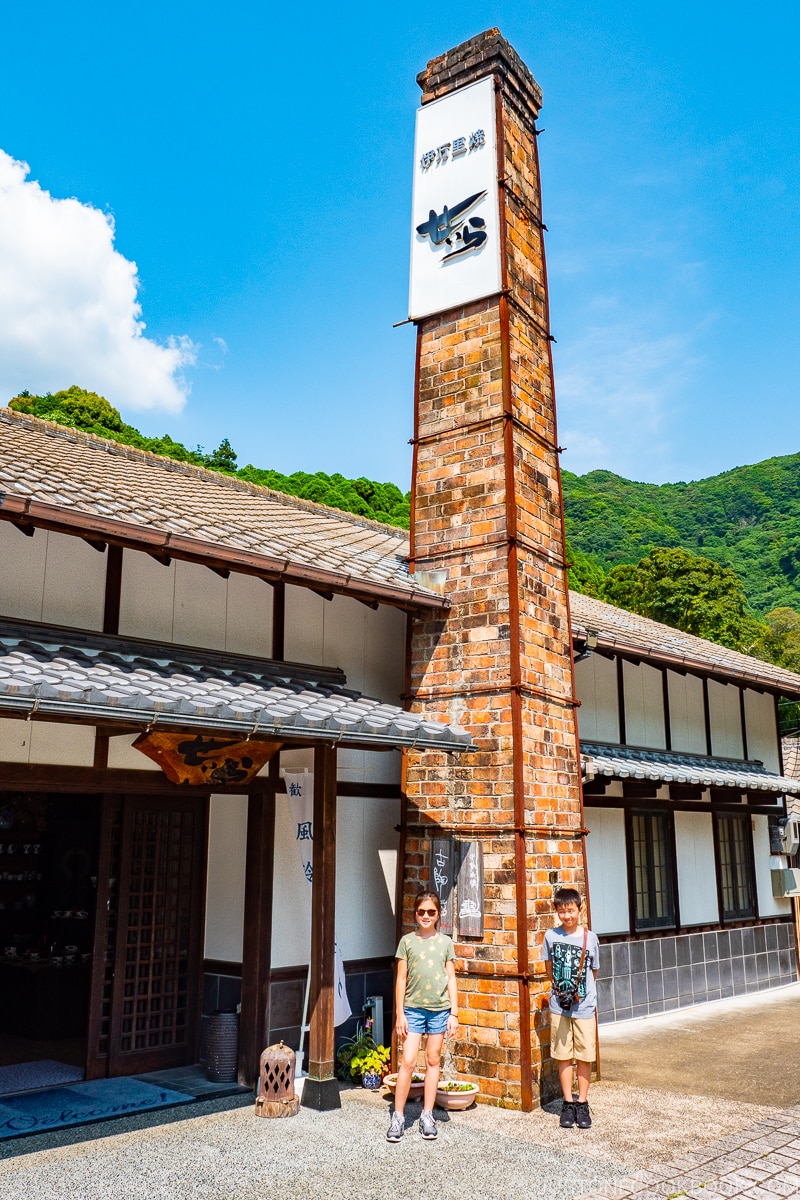
During the Edo period (1603-1868), the Nabeshima clan ruled the Saga Domain (current day Saga Prefecture) and produced premium porcelains for the Japanese nobility and the ruling class as gifts. These porcelains were produced at the remote Nabeshima kilns in Okawachiyama Village. It was referred to as the “Village of the Secret Kilns” due to its isolation and how closely the production secrets were guarded.
Where is Okawachiyama Village
Okawachiyama Village is located in northwest Kyushu (Saga Prefecture). If you are taking public transportation, the easiest way to get there is to arrive at Imari Station and then a 10-min taxi ride to the village.
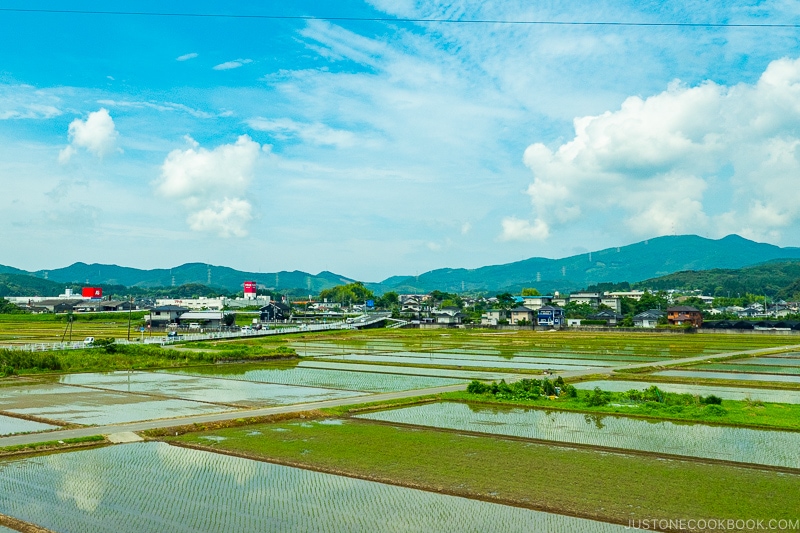
We left Kagoshima by taking the Shinkansen north to Shin-Tosu Station and transferred there to Midori-Huis Ten Bosch train to Takeo Onsen. From Takeo Onsen, we rented a car to explore the Arita and Imari area.
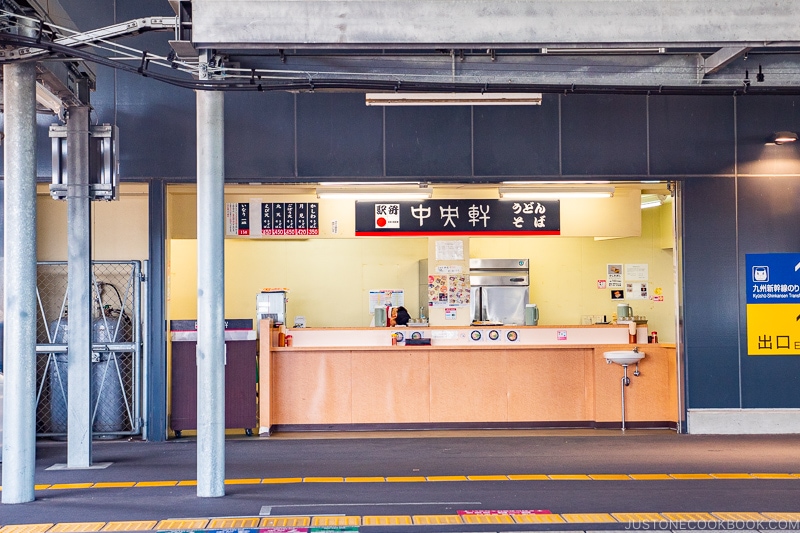

Why Visit Okawachiyama Village
As much as we love big cities in Japan, we treasure the unique and serene experiences in smaller towns and less touristy areas just as much. Okawachiyama Village offers countryside charm and relaxing landscapes for visitors to enjoy without the crowds (at least not when we were there). If you are interested in other less-traveled places in Japan, check out our off the beaten path guides.
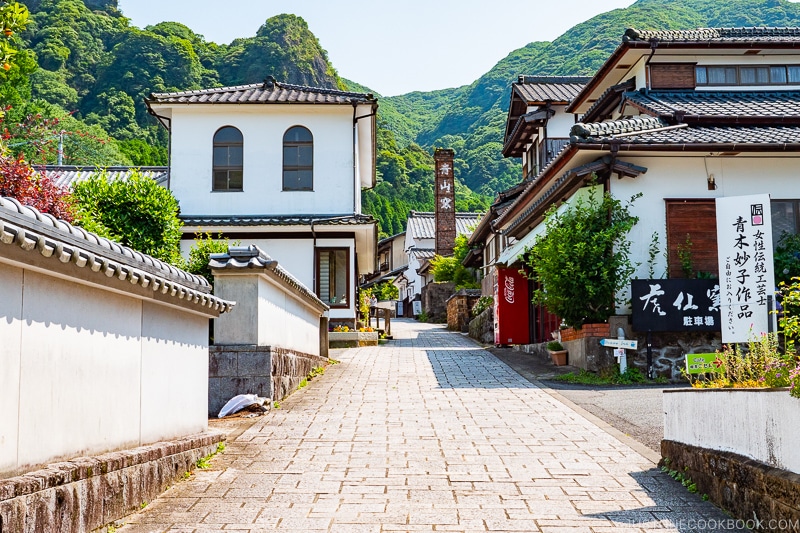
Nabeshima Ware
Saga Domain is the birthplace of Japanese porcelain with 400 years of history. The most well known are Arita ware (有田焼) and Imari ware (伊万里焼), which are widely collected throughout the world.
Okawachiyama Village is small but played an important role in the recognition of high-quality Nabeshima Ware from Saga. Nabeshima Ware, named after the Nabeshima ruling family of Saga Domain produced in the Edo period were all made in secrecy at Okawachiyama Village.
To maintain Nabeshima Ware’s status as an elite gift, the techniques used by the potters to produce the porcelain was a highly guarded secret. The surrounding mountain landscape allowed the Nabeshima clan to guard the kilns and keep the potters from escaping so the production methods weren’t leaked.
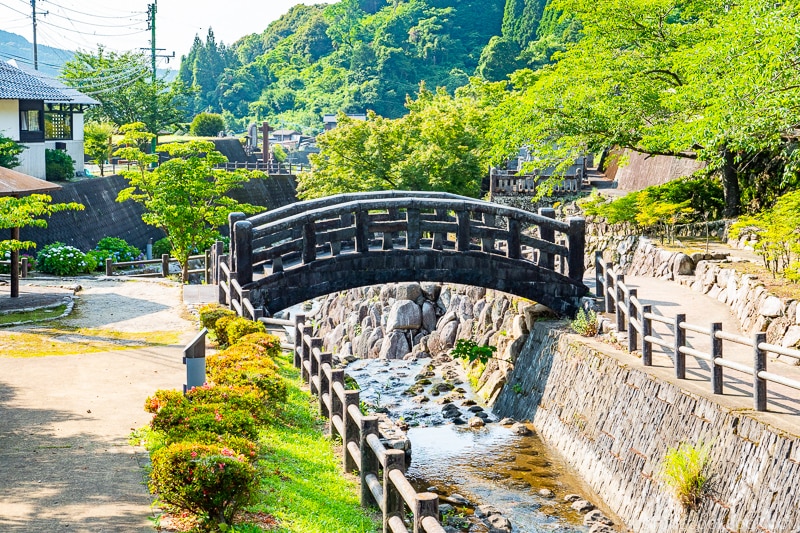
The primary reason for our visit is to see the beautiful ceramics (Nami loves her kitchenware and dinnerware). Secondly, we wanted to add interesting pieces to our food prop collection for the photos.
It’s still worth visiting Okawachiyama Village even if you are not planning to purchase any porcelain. The cobblestone street and the traditional buildings will transport you to a different time.
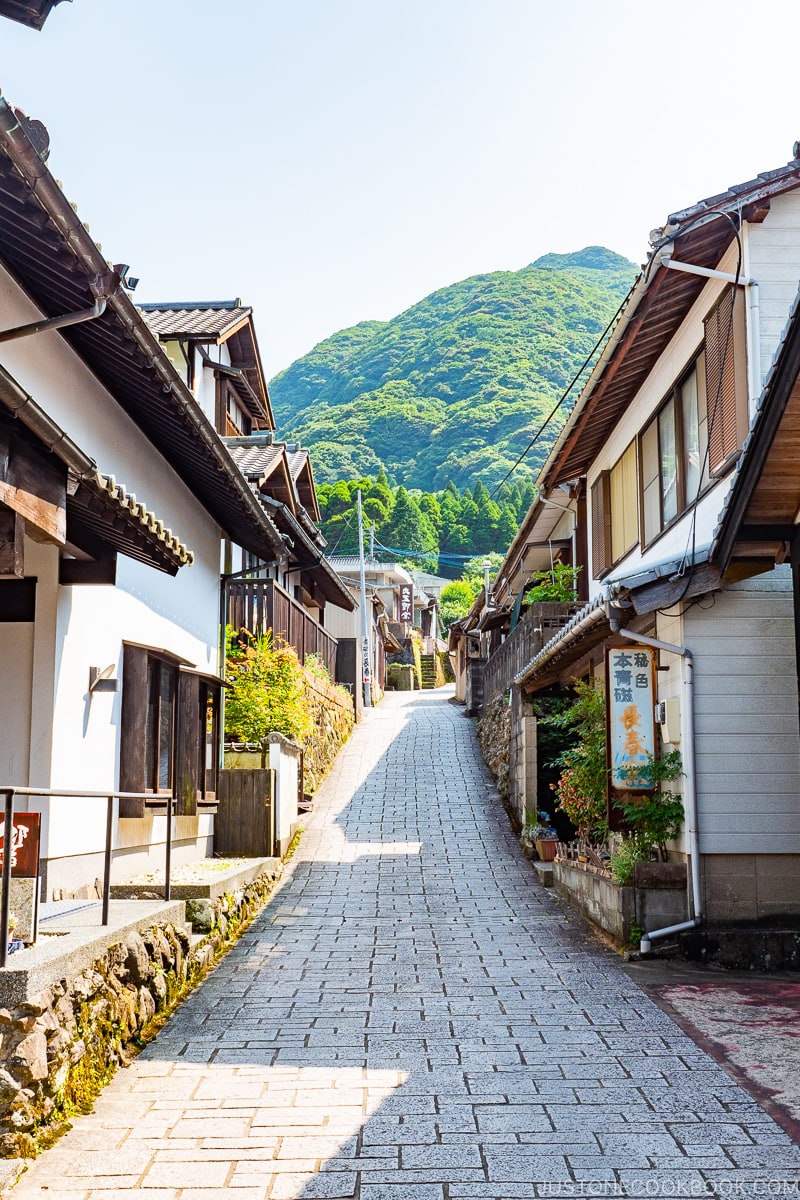
Imari and Arita Ware Traditional Craft Hall 伊万里・有田焼伝統産業会館
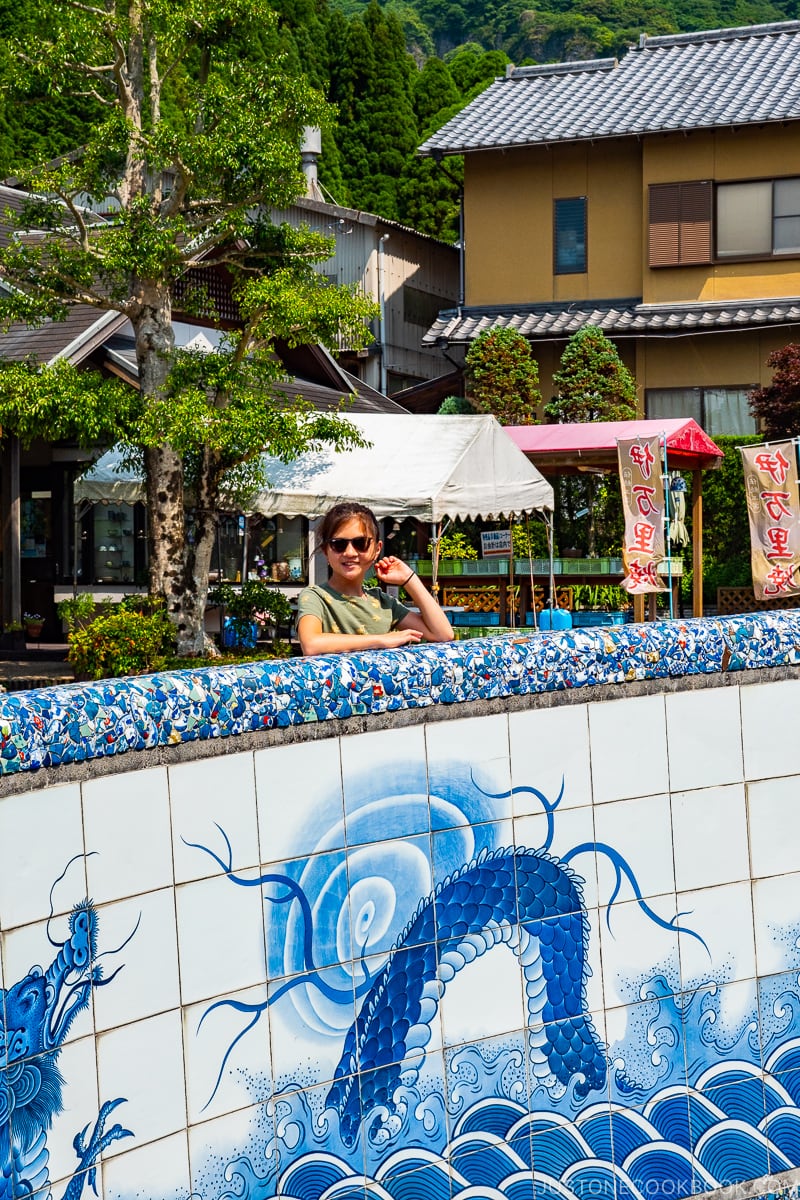
No cars are allowed on the streets in Okawachiyama Village so all visitors are required to park near the village entrance.
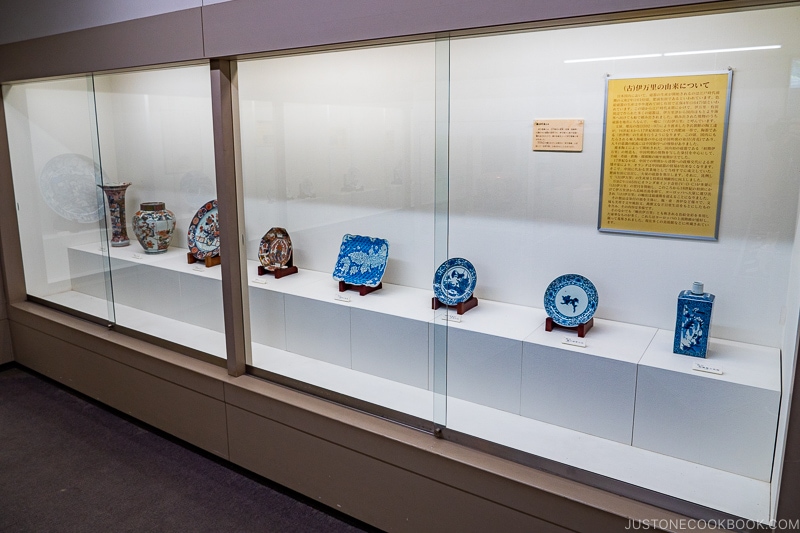
There are two buildings near the village entrance and one of them is a small museum. Inside the museum are various exhibits, which include the history of porcelain in the area, types of clay, the story of Nabeshima Ware, and porcelains with significant cultural importance.
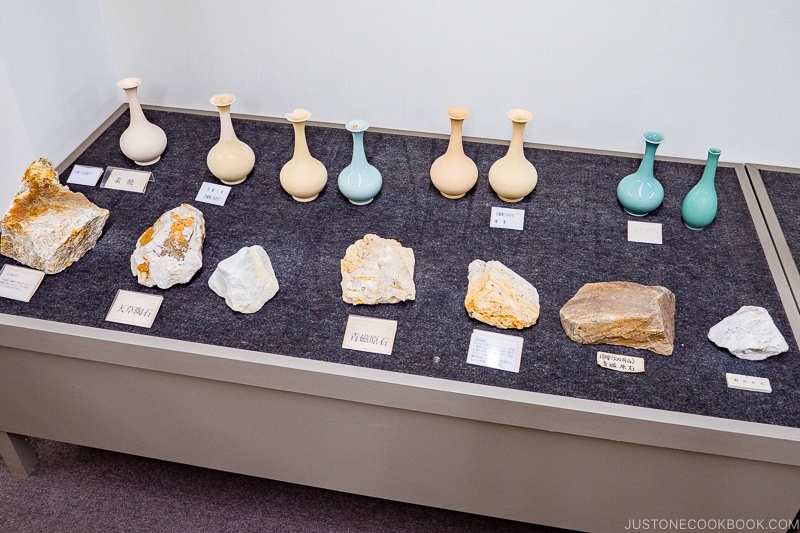
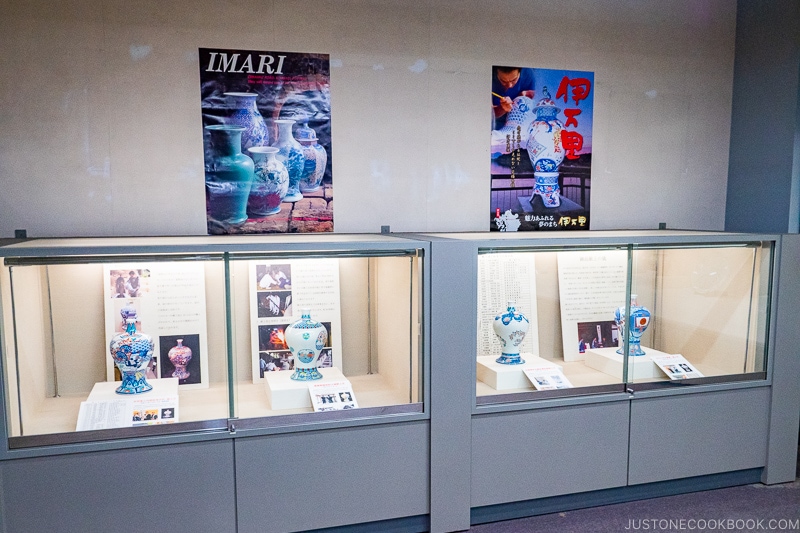
The other building near the entrance is a cafe and gift shop. The gift shop carries a sample of work from all 30 kilns in the village. If you are not sure which shop you want to visit, this is a good place to start. You’d get an overall view of the patterns and porcelain designs on display and decide the ones that suit your taste.
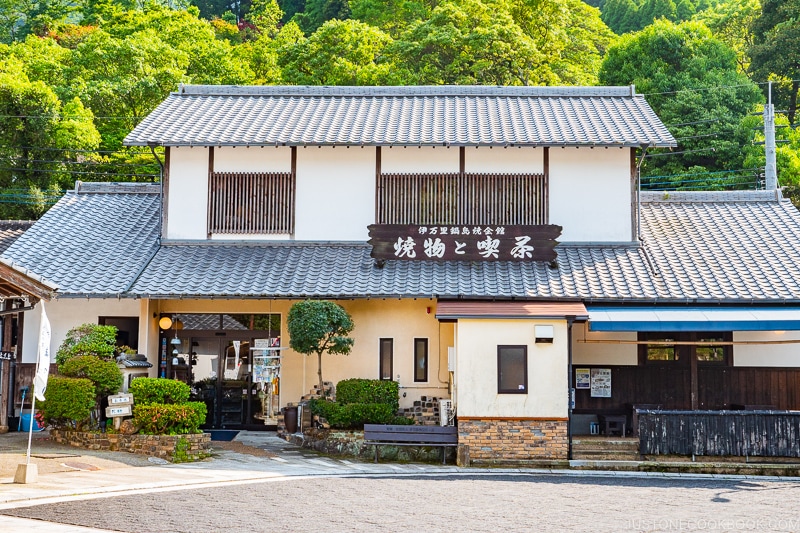
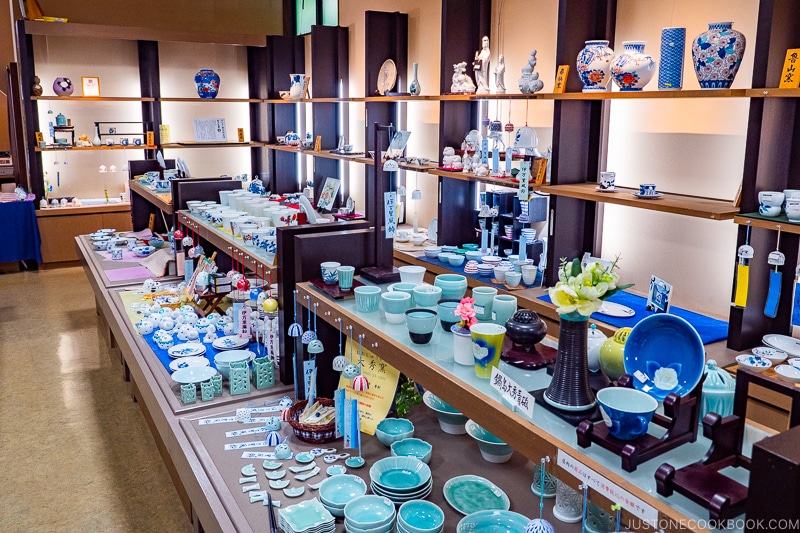
Okawachiyama Village
There are about 30 shops at Okawachiyama Village selling porcelains and various ceramics. In case you are wondering about the difference between ceramics and porcelains, here’s a quick explanation. Ceramics is a general term describing clay that has been heated and hardened.
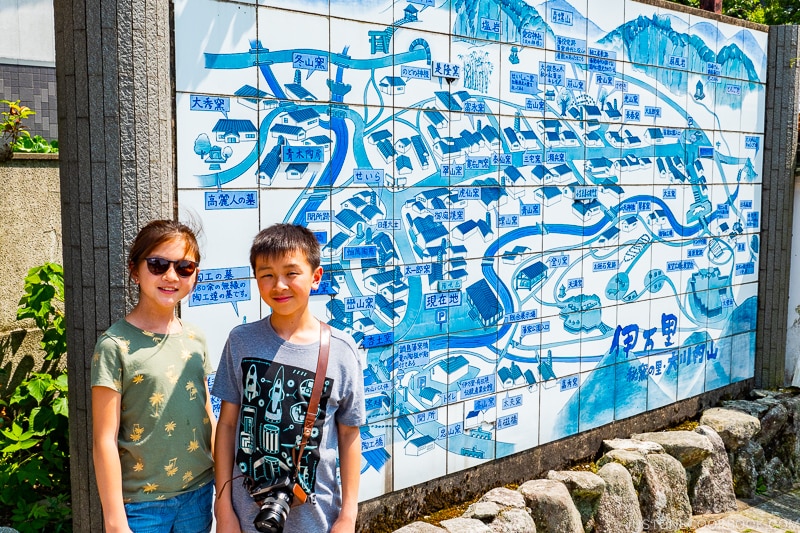
Types of ceramics include pottery, earthenware, stoneware, and porcelain. What makes porcelain unique is it’s made from a white clay called kaolin and heated at a much high temperature than other types of ceramics. Porcelain is thinner and stronger than other types of ceramic and it’s a lot more waterproof.
History of Okawachiyama Village
Porcelain started in Japan in the early 1600s with techniques brought over by Korean potters. When one of Lord Nabeshima’s potters, Risanpei discovered high-quality porcelain clay (Izumiyama Quarry) in Arita, the first kiln dedicated to porcelain started.
The Nabeshima clan kiln moved to Okawachiyama Village around 1675 and produced what is considered the best Japanese porcelain for over 200 years during the Edo period. The kilns were shut down in 1871. The current village re-opened in 1984 and is designated as a national historic site.
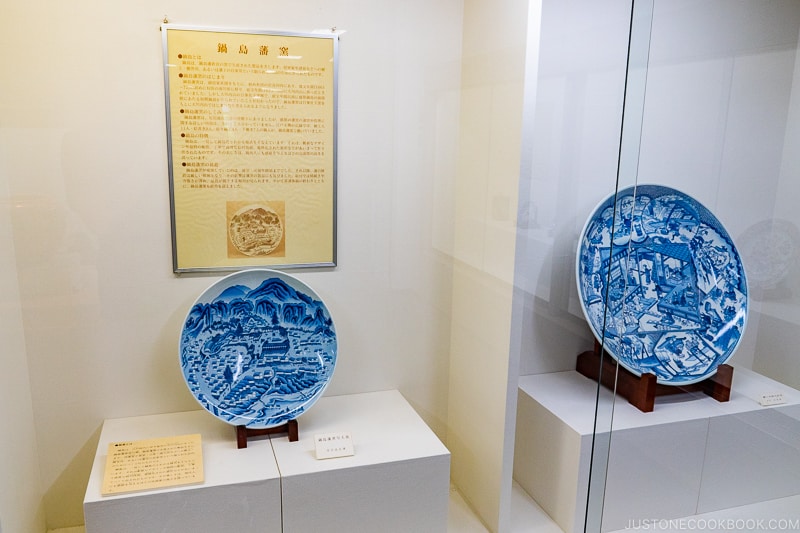
The Shops at Okawachiyama Village
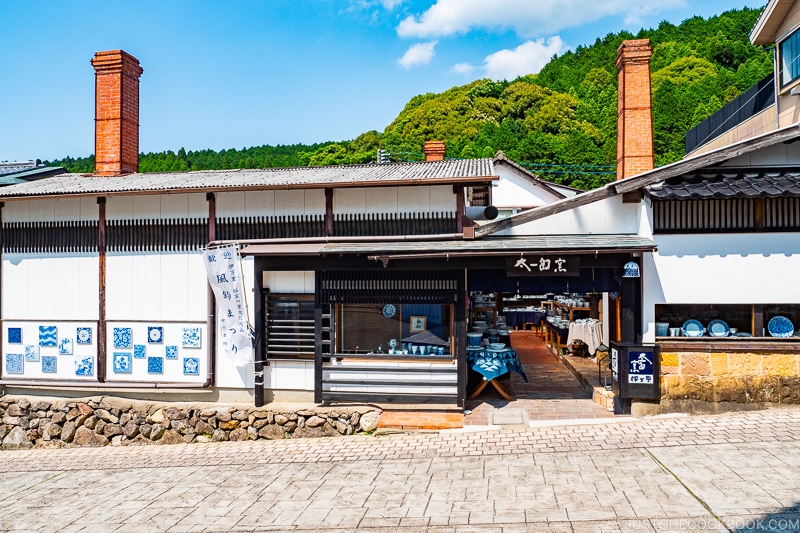
The 30 shops range in different sizes and types of porcelain and ceramics they sell. Compared to the ceramic shops in nearby Arita, the ceramics collections at Okawachiyama Village are more unique and less mass-produced.
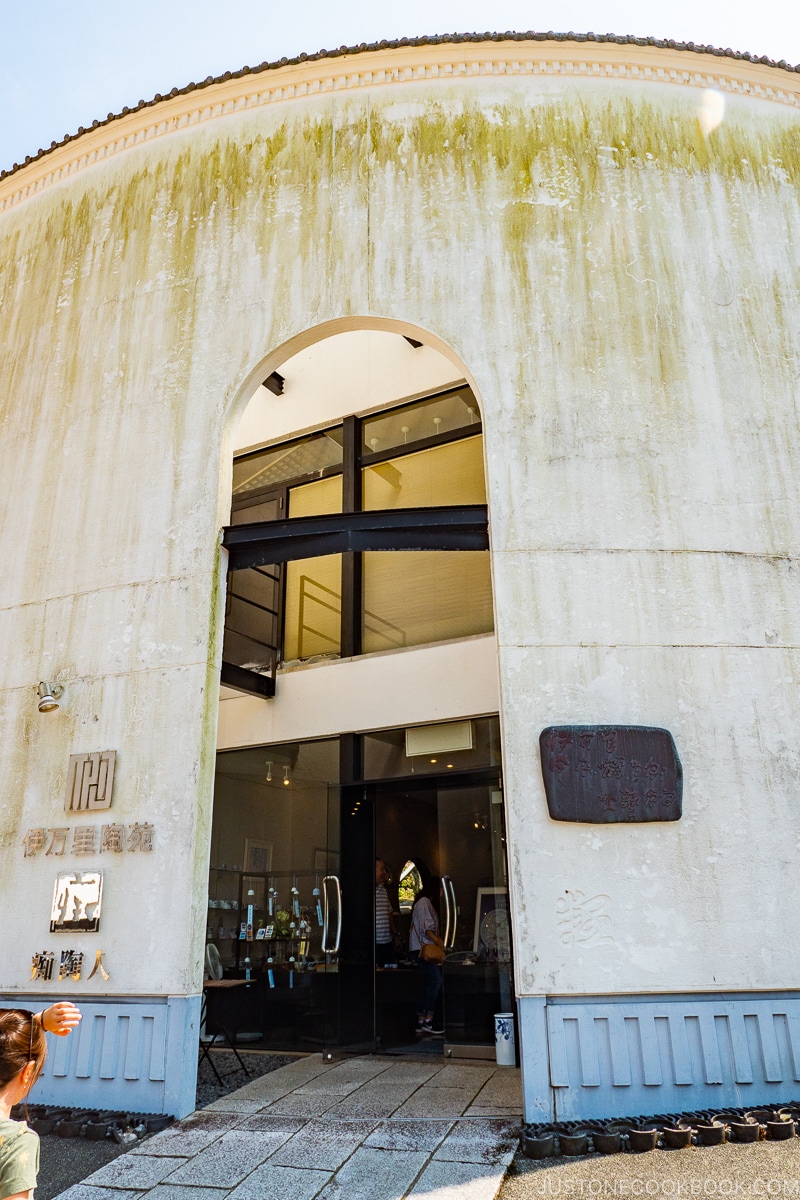
The porcelain pieces are rather expensive, ranging from US$50 to $1,000+. Why so pricey? Many of the porcelains here are for displaying in homes as art pieces or to give as gifts.
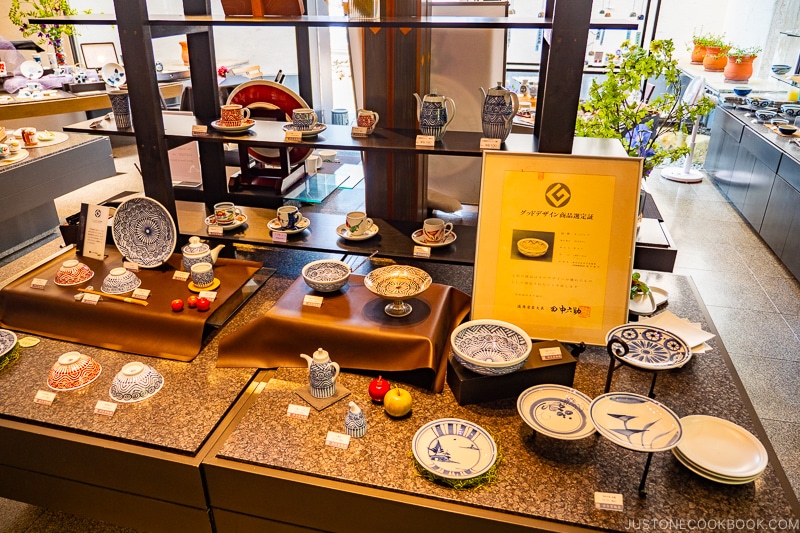
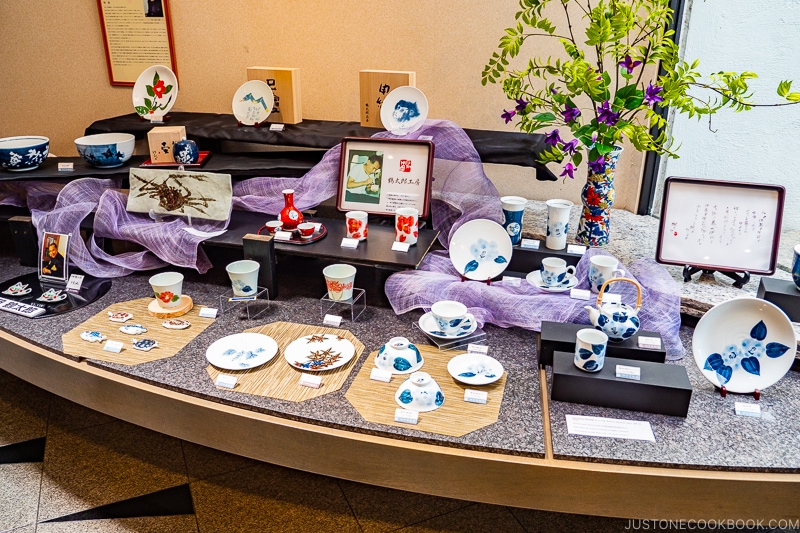
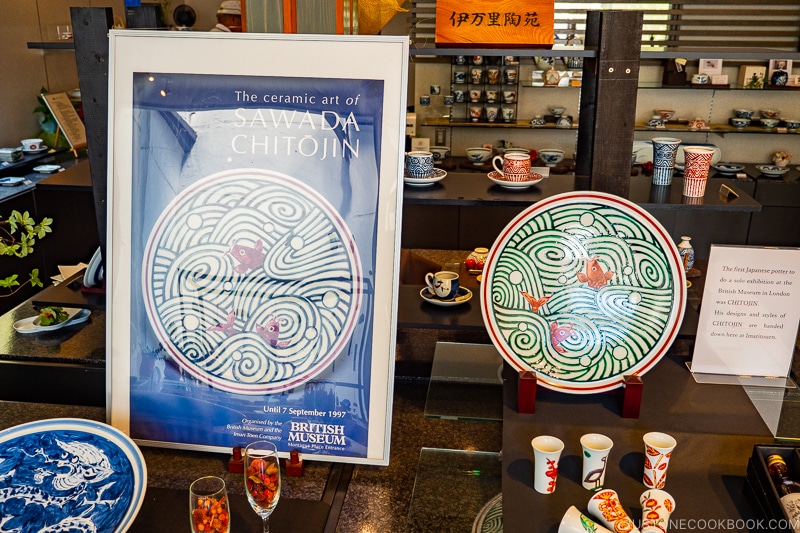
Some of the stores are very modern inside with slicks displays cases while others are more traditional.
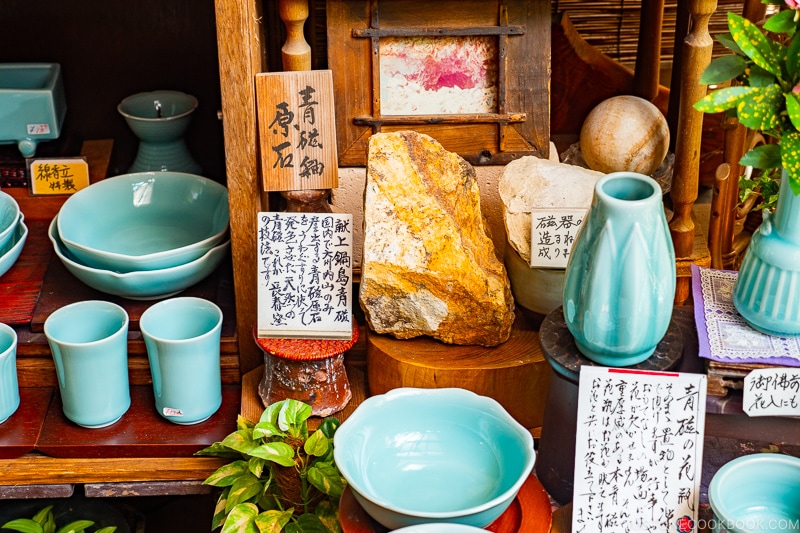
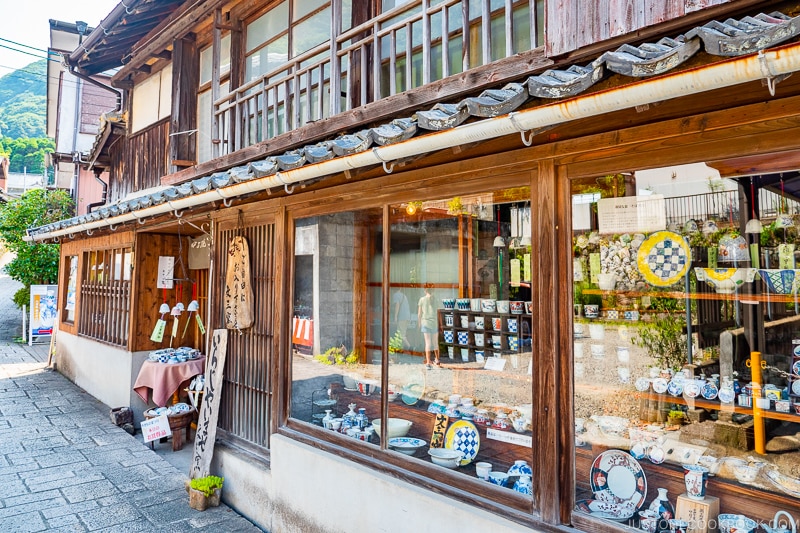
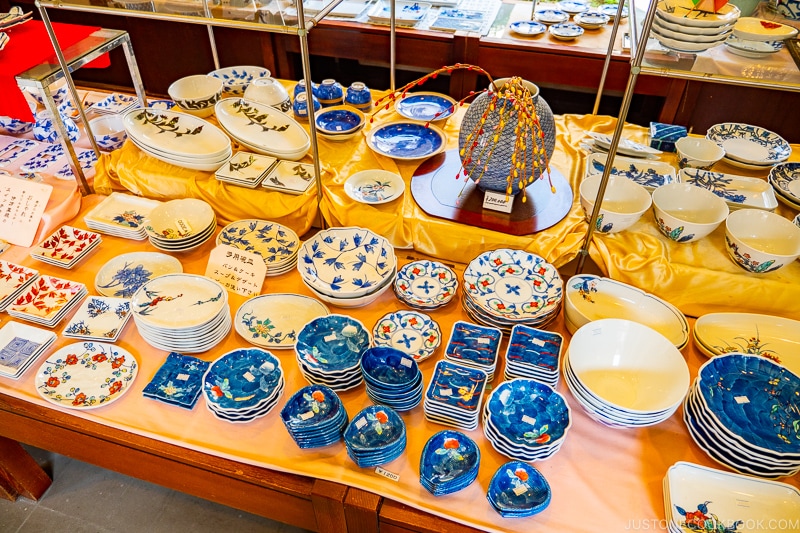
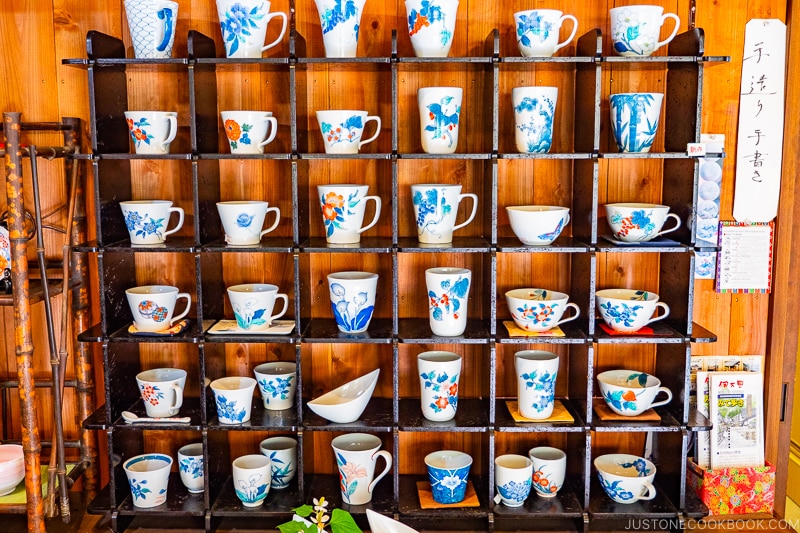
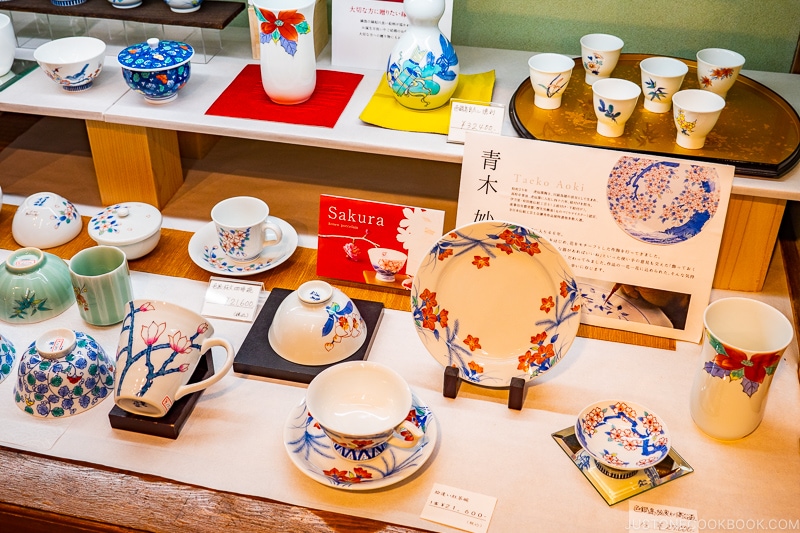
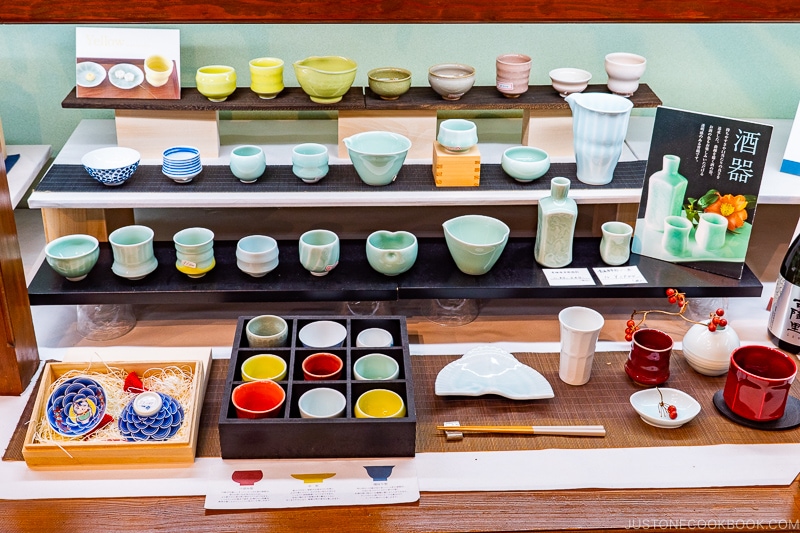
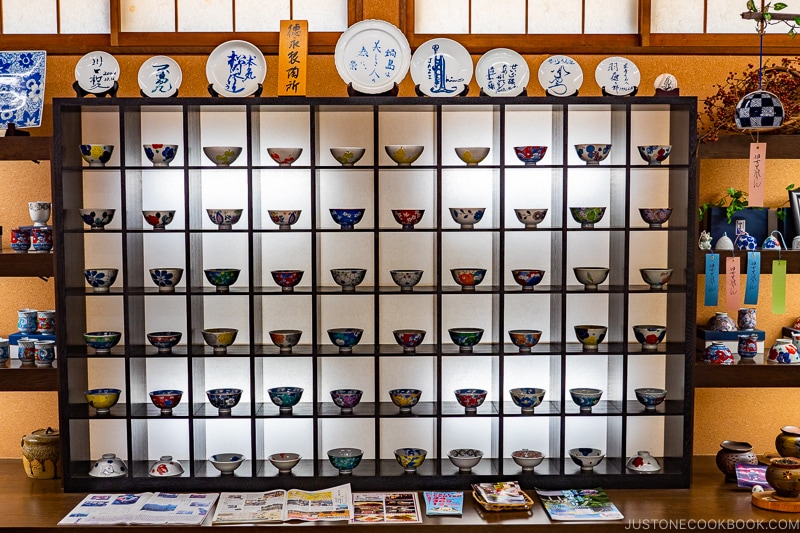
Our Favorite Shop at Okawachiyama Village
Among the 30 shops, one of our favorites was Seizan. Seizan has two showrooms, one features high-end art pieces and tableware and the second one is the more economical Seizan +. The collections are meant for daily home use and the prices are more reasonable.
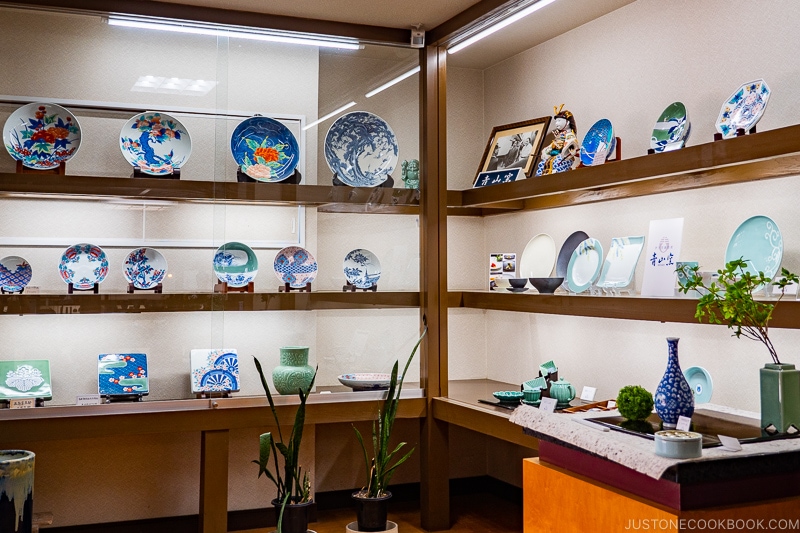
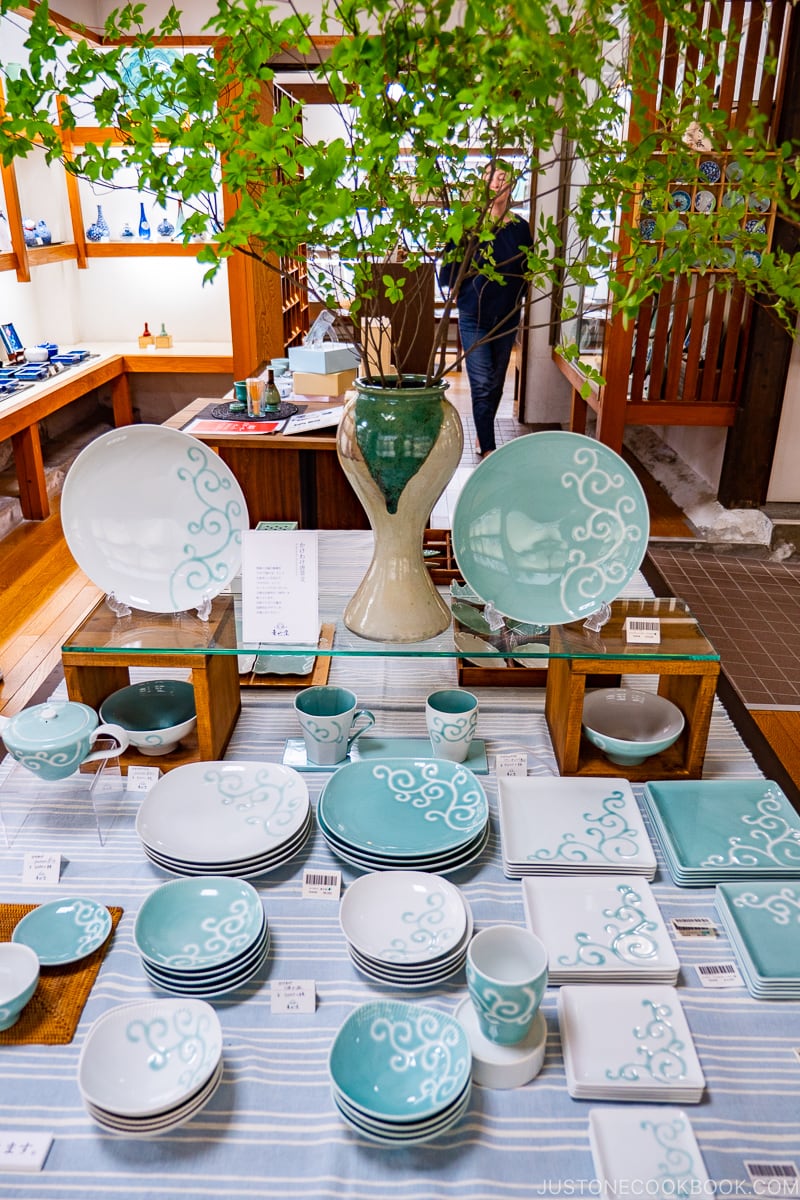
You might recognize some of the porcelains below in our food photos.
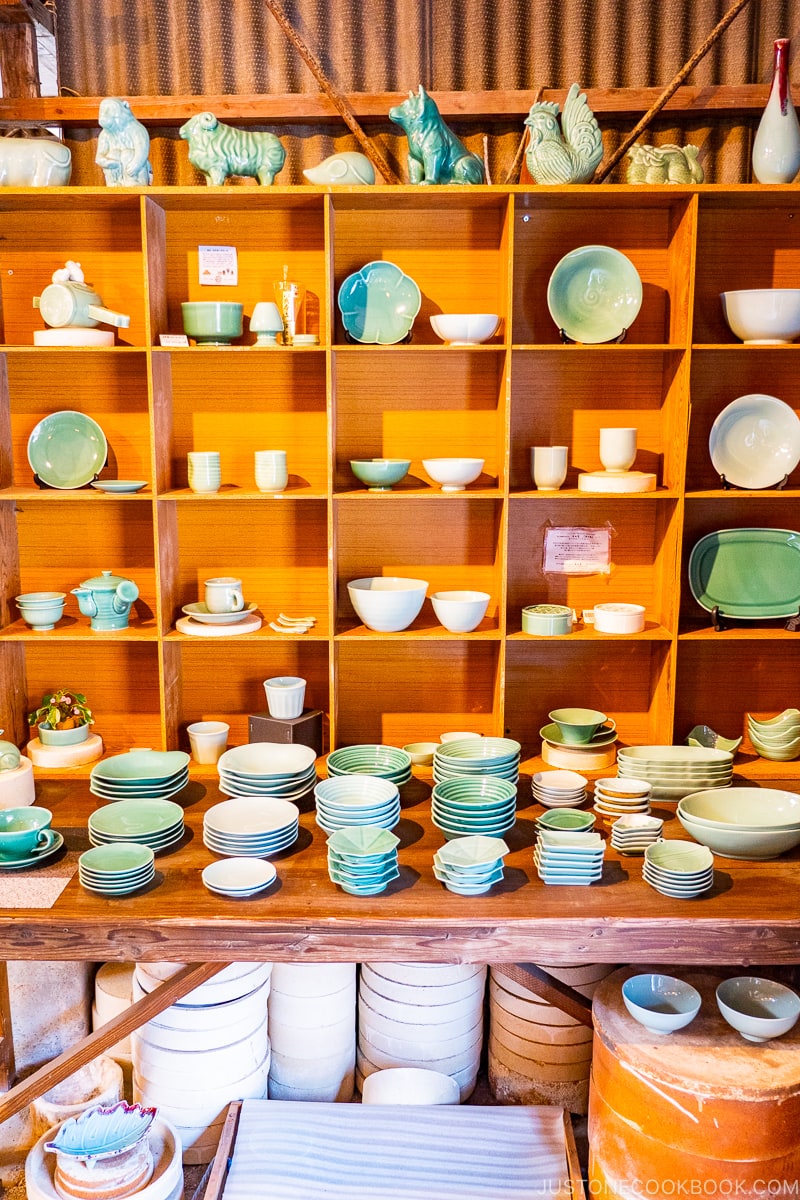
We hope you enjoy the tour of Okawachiyama Village with us. If you love Japanese porcelains and plan to visit the northern Kyushu area, make sure you plan a stop for half a day there. The charming shops, green landscape, and the beautiful porcelains pieces are well worth the time.
But if you can’t make it to Kyushu and want to see a good collection of Japanese porcelain, stop by Tokyo’s Kappabashi Kitchenware Town. It’s the street dedicated to everything you’ll need for the kitchen!
For the next stop, we’ll go to Arita and explore more historical sites for Japanese porcelains.

